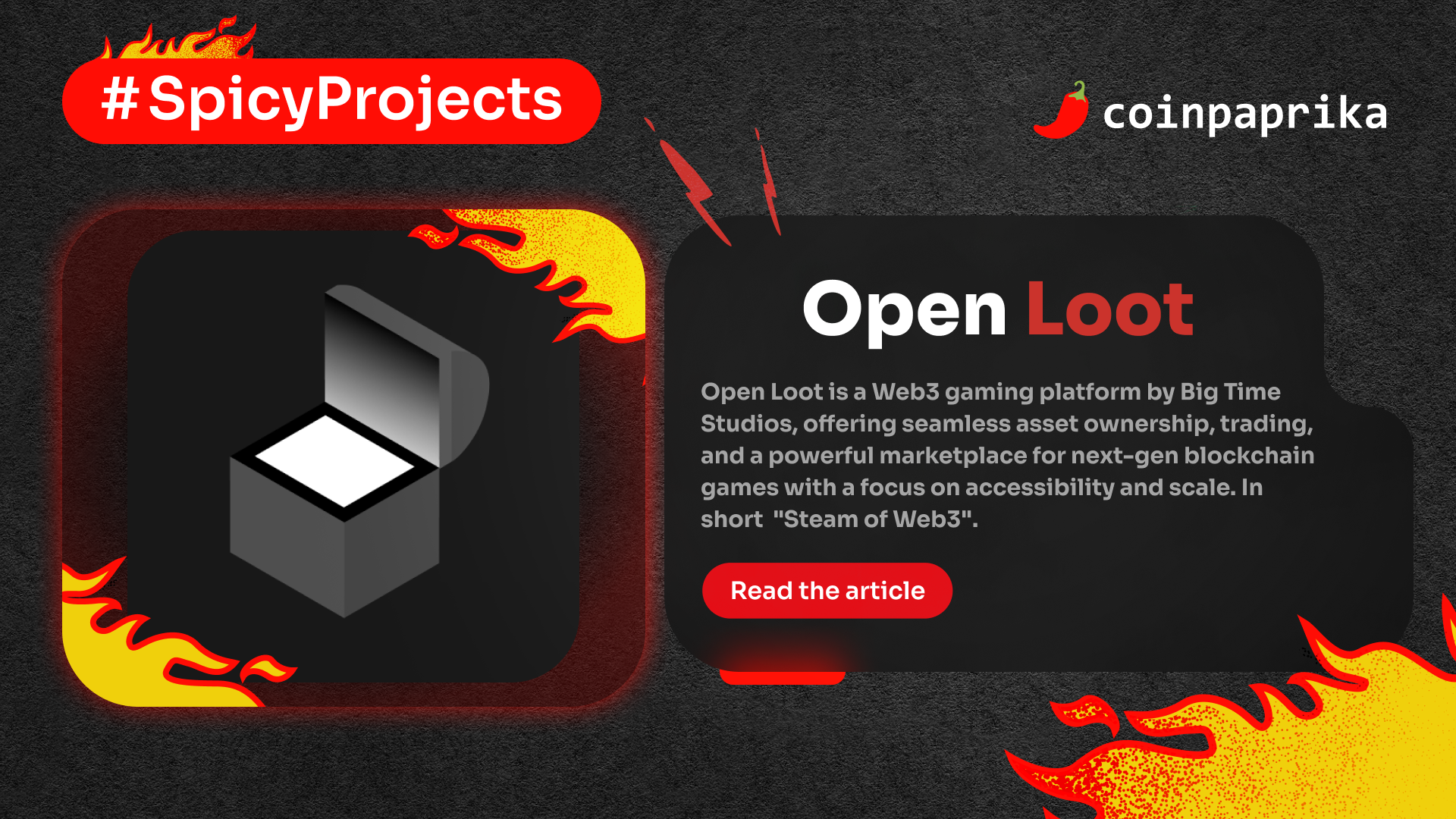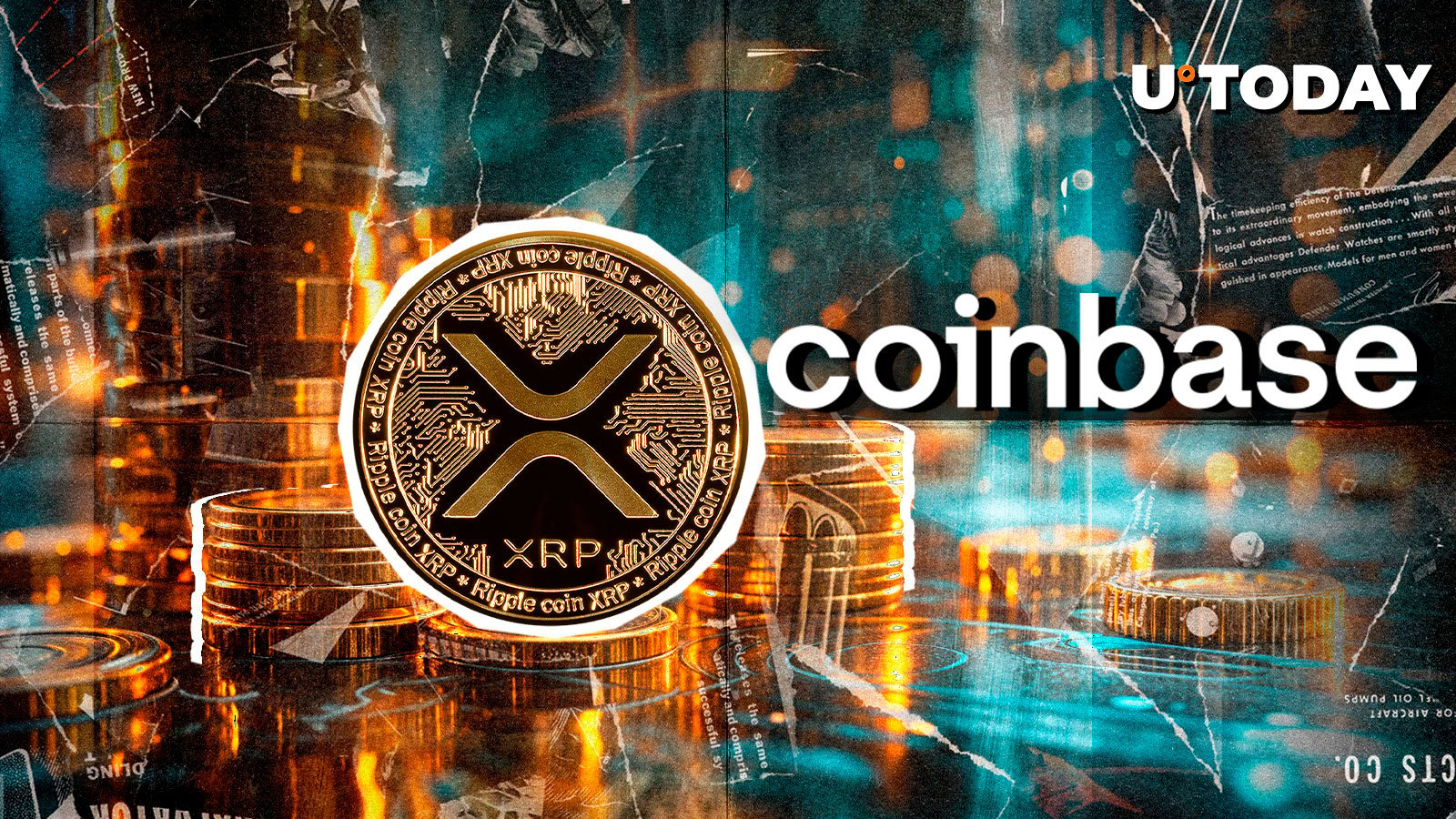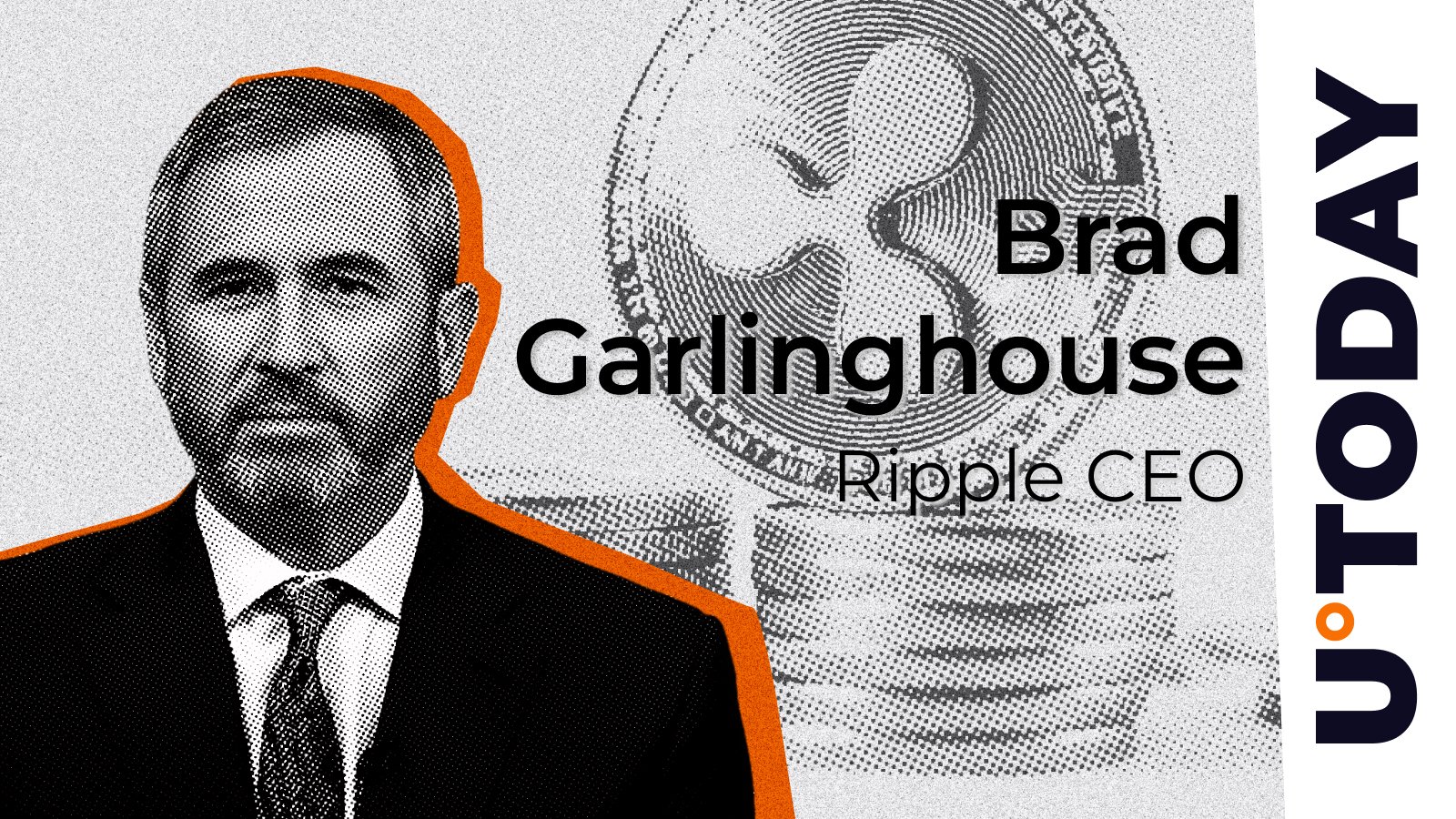
What is Open Loot? Open Loot`s mission is simple yet ambitious: become the "Steam of Web3" with real digital ownership. Founded by Ari Meilich (Decentraland) under Big Time Studios, this Web3 gaming distribution platform and marketplace addresses the key challenges that have held crypto gaming back—growth, user experience, scalability, payments, and compliance. The team built Open Loot after seeing the massive success of Big Time`s NFT ecosystem, which generated over $150 million in revenue and $100M+ in NFT sales during Early Access. Now they`re bringing that winning formula to a wider ecosystem of games, allowing players to own, trade, sell, and use in-game assets (NFTs) across multiple titles. All designed to make Web3 gaming more accessible and rewarding for everyone involved. Premier Partner Games Open Loot isn`t just a marketplace—it`s home to some of the most exciting Web3 games in development: Big Time – The flagship free-to-play multiplayer action RPG with time-traveling adventures, unique cosmetics, and massive battles Boss Fighters – Multiplayer mayhem where Fighters team up to take down a player-controlled Boss WorldShards – A sandbox MMORPG with base-building, exploration, and an entire world to shape Shatterpoint – Mobile action RPG with PvE battles, progression, and skill-based combat The Desolation – A looter-shooter for mobile with deep customization and team-based strategy KOKODI Games – A mix of extraction shooter, survival, RPG, and battle royale chaos Moonfrost – A free-to-play isometric life-simulation RPG featuring next-gen pixel art, farming, crafting, and exploration in a dynamic, ever-evolving world. These aren`t simple blockchain games—they`re full-featured experiences designed to compete with traditional gaming while offering the benefits of Web3 ownership. Player Experience and Developer Tools Open Loot offers unique features that benefit both players and developers: For players, Open Loot creates a seamless experience by: Empower player-owned economies through blockchain integration Enhance accessibility with Vault technology for seamless asset management Enabling advanced marketplace features like NFT rentals Supporting non-crypto game currencies alongside blockchain assets Providing comprehensive price histories and activity tracking For developers, Open Loot delivers: Out-of-the-box tech solutions including game launchers and premium currencies Advisory support from the team behind Big Time`s success Marketing assistance, token design guidance, and production support A ready-made audience of Web3 gaming enthusiasts Why Open Loot Matters Web3 gaming has struggled with mainstream adoption, but Open Loot is changing that by focusing on what matters most—great games and seamless experiences. Their approach has already proven successful, with impressive numbers: Over 1.5 million players across their ecosystem Nearly $500 million in transactions in 2024 alone 327,000+ members in their Discord (bigger than some AAA games) 1.16 million+ combined followers across Open Loot & Big Time social channels The platform`s success shows that blockchain gaming can achieve mass adoption when the technology enhances rather than hinders the gaming experience. What`s Next? Open Loot is just getting started, with major developments on the horizon: Expanded roadmaps for Big Time and other ecosystem games More Web3 studios joining the platform (recently added @Kokodigame and @Moonfrostgame) Additional partners set to launch their game economies in late 2024 Continued enhancement of their marketplace features and Vault technology BIG TIME Binance Community Vote Big Time is now up for a community vote on Binance. This is a major opportunity to bring Web3 gaming to an even wider audience. Every vote counts! Let`s show Binance how strong our community really is. Vote on Binance Fun Fact The $OL token had no presale and no VC allocations—it`s 100% community-driven! This player-first approach perfectly aligns with Open Loot`s mission to put gamers at the center of the Web3 gaming revolution. From its origins as an extension of Big Time`s success to becoming a comprehensive gaming platform, Open Loot represents one of the most promising gateways to mainstream Web3 gaming adoption. Keep an eye on this project as it continues to bridge the gap between traditional gaming and blockchain technology. Stay tuned for more Spicy Projects, where we highlight the hottest ideas in Web3!
Coinpaprika
You can visit the page to read the article.
Source: Coinpaprika
Disclaimer: The opinion expressed here is not investment advice – it is provided for informational purposes only. It does not necessarily reflect the opinion of BitMaden. Every investment and all trading involves risk, so you should always perform your own research prior to making decisions. We do not recommend investing money you cannot afford to lose.
Bitcoin Volatility Drops to 2.68%, Signaling Possible Calm Phase in the Market

The sharp decrease in Bitcoin’s volatility has caused some intrigue among traders and investors. As of April 3, 2025, the price of Bitcoin was only somewhat affected in its moves, resulting in the price not swinging up or down dramatically—yielding a nearly low 2.68% price movement to and fro, according to data from @coinglass_com. Days beforehand, as late as March 30, all charted data and trader feelings registered that Bitcoin was a 3.47% volatile play to swing in and out of for potential profits in the near term. What these aforementioned folks might wish to assess or really could even hope to try and figure out is what the sharp decline in volatility could potentially signify. Bitcoin Volatility Drops Sharply to 2.68% – Market Enters a Calm Phase? According to @coinglass_com data on April 3, Bitcoin’s volatility has dropped significantly to 2.68%, down from 3.47% on March 30. What does this mean? -Lower volatility often signals a decline in… pic.twitter.com/t06Vv9LK7w — Followin (@followin_io) April 3, 2025 Understanding the Implications of Reduced Bitcoin Volatility Defining Bitcoin’s Price Movement with Volatility. For a long time, Bitcoin’s price movements have been very volatile. Over the years, the reputation that Bitcoin has earned is that it is a very volatile asset to hold. It frequently undergoes sharp swings—that’s the nice way to put it—that create both chances and dangers for investors. It creates both opportunities and risks for investors. Periods of heightened volatility are typically associated with speculation, retail FOMO, and external factors like macroeconomic data or shifts in market sentiment. The recent decrease in volatility appears to represent a shift in market dynamics. When volatility drops, it often indicates that speculative trading and retail-driven enthusiasm have slowed down. This can also mean that the market has entered a consolidation phase, where Bitcoin’s price stabilizes and fluctuates within a narrower range. In these periods, market participants may adopt a more cautious, long-term approach; and this may lead to less buying and selling activity that resembles the frenzied trading of the near past. The lessening of volatility could be taken to suggest that Bitcoin is leaving behind the wild swings of price that define periods of extreme speculation—for instance, 2017 and late 2020 to early 2021. A period of calm, in which price accumulation favors bulls, might be at hand. Not that any of this is a sure thing: Investors are as much in control of Bitcoin’s next phase as they were of its last phase. One thing may be sure, though: The period in whose midst we now find ourselves can hardly be thought to favor bears. The Role of Macroeconomic Factors in Bitcoin’s Price Stability Bitcoin’s volatility has mainly been driven by its sensitivity to major macroeconomic changes. Inflation, interest rates, and geopolitical events can all cause the price of Bitcoin to change significantly, in one direction or another. But it’s not only direct changes to the economy that can move Bitcoin’s price; we’re just as likely to be influenced by what happens in the traditional financial markets, which in turn have a big effect on investor sentiment. And when there’s a big shift in the traditional financial markets, the cryptocurrency space is affected, too. For instance, when inflation is on the increase or interest rates are expected to go up, investors might turn to Bitcoin as a safety harbor against the usual kinds of investment-pop risks, like plummeting stock prices. By contrast, when the economic picture normalizes, or when ordinary inflation expectations return to the kinds of ranges they usually hang out in, Bitcoin’s price might settle into a more stable range. In the past few weeks, some of our key external factor indicators have been showing signs of stabilization, and this might be the reason Bitcoin’s volatility has been reduced. The price of Bitcoin tends to climb when investors look for substitutes to conventional assets such as stocks or bonds, especially during periods of economic uncertainty. Yet, when those uncertain conditions ease up, Bitcoin’s volatility may well drop, too. And it could be that the overall financial landscape has stabilized recently, which would make for fewer external risk factors pushing investors in the direction of Bitcoin and thus for Bitcoin’s price to make fewer waves. Is Bitcoin Entering a Period of Accumulation or a New Breakout? Bitcoin’s volatility has dropped to 2.68%, leaving those who participate in the market wondering about its future. One question often posed is whether we are now in an accumulation phase of reduced volatility, during which HODLers are amassing yet more coins, or whether Bitcoin is gearing up for another dissolution of the same kind of order it just dissolved itself into. In the past, times of low price swings have always been followed by sharp moves in the other direction. A bit of compression of Bitcoin’s recent price range might be a sign of the calm before a new storm—either a big rally or a big bust, and busts can sometimes be just as big as big rallies. Low volatility typically leads to a rise in implied volatility and a rise in the price of options, which is exactly what we are seeing in the Bitcoin market today. Conversely, Bitcoin’s recent price stabilization could be a sign of an accretion period, in which long-term investors steadily build positions without being driven by the all-too-common relentless short-term price action. Accretion phases tend to look like this: Bitcoin’s price moves within a narrower range, and investor sentiment is peaceful and relatively impartial. Everybody’s just waiting for the next big thing. What’s the next big thing? Nobody knows. But whatever it is, the wait looks like it could be some time. The current consolidation phase of Bitcoin could draw the market’s attention for a variety of reasons. One is the upcoming economic data that are about to be released. How will the figures affect the in-progress shifts in global sentiment that seem to be happening? The broader cryptocurrency market performance also fits into this conversation. If it performs well, can we expect Bitcoin to keep on keeping on with its consolidation? Of course, there’s the inverse side to all of this, for which none of us would want to be caught on camera as half-investor, half-sportscaster when this is the framework we’re working with. A Calm Before the Storm? Although predicting the exact path of Bitcoin in the next few weeks is hard, the present low volatility might lull speculative traders into a false sense of security. History has often shown that quiet periods in Bitcoin’s price movements can be precursors to more dynamic phases. So, will Bitcoin surprise us next by breaking to the upside or downside? Only time will tell. The essential aspect for investors to deal with this phase will be to stay abreast of both the wider economic environment and the conditions that are developing within the cryptocurrency market itself. This is a pretty general piece of advice, but it is particularly relevant now. While there has been some decrease in volatility, Bitcoin may still be an asset class that is just one benign or malevolent news cycle away from making a serious move—in either direction. At the moment, Bitcoin’s price movements are calm, and this affords traders a chance to reassess their positions in the market. Long-term investors can also use this time to accumulate more Bitcoin without the immediate pressure of dealing with sharp price fluctuations. And yet, the current state of affairs raises a couple of interesting questions: Is this the calm before some kind of storm? Or is it the calm after the storm that was Bitcoin’s price chopping back and forth between $30,000 and $40,000 for most of 2023 so far? Conclusion A recent dip in Bitcoin’s volatility to 2.68% indicates a shift in market conditions and the potential for a phase of consolidation. Traders and investors tend to think of lower volatility as meaning the market is moving toward a phase of reduced speculative activity. There’s often a pretty close association between lower volatility and what some might call a “death spiral” for Bitcoin. But the recent dip in Bitcoin’s volatility might also be the calm before a major price breakout. It might just be a better market condition for traders of all types. Disclosure: This is not trading or investment advice. Always do your research before buying any cryptocurrency or investing in any services. Follow us on Twitter @nulltxnews to stay updated with the latest Crypto, NFT, AI, Cybersecurity, Distributed Computing, and Metaverse news ! Coinpaprika

Bitcoin’s Price Stays Resilient Amid Market Challenges, Key Range Holds for Next Big Move
Bitcoin (BTC) has managed to hold its ground, scratching its way back to an impressive high of $87.3K yesterday, demonstrating its resilience in a volatile market. Despite Bitcoin’s recent modest gains, the broader cryptocurrency market has been struggling, with altcoins like $HYPE, $CRO, and $ONDO lagging behind in the wake of Bitcoin’s price movements. Over the past week, the total cryptocurrency market cap has seen a slight decline of about 7%, with Bitcoin showing a slight gain of 0.2%. This contrast highlights Bitcoin’s continued dominance and strength relative to other altcoins, though the market remains uncertain in the face of external factors. Bitcoin`s market value has scratched its way back to a high of $87.3K today as altcoins continue to fall slightly behind. Crypto`s total market cap is still down ~-7% in the past week despite $BTC being +0.2% in the past week. $HYPE , $CRO , & $ONDO are also altcoins to watch. pic.twitter.com/SRnPA3aWwl — Santiment (@santimentfeed) April 2, 2025 Tariffs Impact and Bitcoin’s Key Price Range Bitcoin’s price action has also been affected by macroeconomic news, especially from the U.S. When President Donald Trump announced new tariffs, for instance, we saw a clear market reaction with Bitcoin. Last night, a total of 18,930 BTC was sold off in a hurry by short-term holders, and we can guess with a fair degree of certainty that these folks were motivated to hit the sell button by the new economic uncertainty the tariffs are causing. This is yet another example of how fragile market sentiment is right now, particularly for short-term investors who are stirring increasingly restless. 18,930 #Bitcoin $BTC were sold by short-term holders last night, immediately after @realDonaldTrump announced new tariffs! pic.twitter.com/pONWoxV5a9 — Ali (@ali_charts) April 3, 2025 At present, Bitcoin is teetering in a pivotal price span, holding between $86,900 and $84,800. This area has morphed into something akin to a no-wire box, confined and crucial for Bitcoin’s current price action. It’s what Bitcoin seems to do instead of a not-so-happy standard deviation when there are all kinds of reports foretelling its doom or salvation. The box doesn’t really have a lid; we could use fanciful names for some of the reports that tend to come in right before or after making a move outside the confines. These reports use all kinds of research to tell us why the top is in or why the bottom is in. For Bitcoin bulls, it is crucial to keep supports above inline with the $84,800 mark, and it is most likely to occur if the sustaining forces are maintaining that $84,800 threshold as the bottom price level. That’s gives Bitcoin a lion’s share of the chances to keep the line above that level, which is the line the bulls want to keep in the going for the upside—that Bitcoin continues to not only coalesce above that $84,800 mark but also ‘attempt a new upside breakout.’ Key Support Zones and Investor Sentiment The tethering of Bitcoin’s price movement occurs at several support levels. These are particularly evident between $65K and $71K. This is a zone of price action that has lately gravitated in the direction of not-so-recent buyers who are in the weight class of “strong hands.” Accumulating in the presumption that a price breakout will occur soon, these levels seem to be serving the function of “upper supports.” It is not as though price cannot go lower; rather, it seems that these just are not the places where price is likely to go lower for very long. $BTC’s key support zone sits between $65K–$71K, where recent buyers have been loading up. Weak hands might panic, but stronger holders are stacking. This is the kind of range where big moves get set up. pic.twitter.com/wR7YVh6V1v — Kyledoops (@kyledoops) April 2, 2025 The market dynamics of Bitcoin draw their strength from a potent combination of short-term speculation and long-term faith. When the market shows even the slightest sign of trouble, it is the weak hands that sell off and for all intents and purposes, give up on Bitcoin. But when it comes to the stronger hands in the market, the ones that supposedly have better character with which to support Bitcoin, the recently established support zone between $65K and $71K is the place where these guys have put their money and their belief. Inflows to Bitcoin ETFs Signal Reversal in Market Sentiment Institutional investors are a renewed sign of confidence in the relatively challenged cryptocurrency market. They have shown considerable interest in Bitcoin. On April 2, the spot Bitcoin ETFs in the U.S. recorded a total net inflow of $221 million after three consecutive days of outflows. This marked reversal highlights the increasingly growing appetite for Bitcoin among institutional investors. They are now viewing the cryptocurrency as a legitimate store of value, and this trajectory further narrows the route toward Bitcoin’s potential future as a widely acknowledged reserve currency. On April 2, U.S. spot Bitcoin ETFs recorded a total net inflow of $221 million, marking a reversal after three consecutive days of outflows. In contrast, spot Ethereum ETFs saw a total net outflow of $51.24 million, with none of the nine ETFs registering a net inflow.… — Wu Blockchain (@WuBlockchain) April 3, 2025 The capital pouring into Bitcoin ETFs indicates that institutional sentiment is headed in a positive direction. Even so, recent pressures in the external macro environment have tested the geforce capacitors of Bitcoin’s resilience. With a not unthinkable midterm election in the offing, and a high noon for U.S. debt and other payments coming up in December, the macroworld is not in an especially safe space. Yet the altcoin market is the one that’s volatile right now, and even institutional Tesla and Elon Musk seem to be matters of history and Legends of the Fall. Altcoins Struggle to Keep Pace Despite showing some resilience, altcoins such as $HYPE, $CRO, and $ONDO are unable to keep pace with Bitcoin. The tokens are running up against a couple of headwinds. One is that in a time of increasing competition among altcoins, Bitcoin is simply too robust and well-established a competitor for these tokens to contend with. To add to that, these tokens have in recent days simply not performed anywhere near as well as Bitcoin. This trend suggests that for the moment, Bitcoin is still the favored asset for not only long-term but also for short-term investors. It is stable enough now, at a price midpoint between all-time highs and recent lows, that its dominance seems to dictate the broader market’s movement. Some alternative cryptocurrencies (altcoins) may very well catch up down the road, but as of now, Bitcoin seems to have the wind at its back. Looking Ahead: Will Bitcoin Break Out or Consolidate? With Bitcoin lingering between vital support levels, all eyes are on it to see what might unfold next. The price of Bitcoin hovers between the vital levels of 86,900 and 84,800 at present. Investors gnash their teeth. When Bitcoin moves, it sets the tone for everything else in the crypto market. Bitcoin has managed to remain unscathed in the face of external challenges that have come at it from all angles, like new tariffs, for instance. But the biggest threat to Bitcoin seems to be the volatility of its own market. However, despite that, Bitcoin has been showing signs of increasing maturity as an asset. For one, the storied involvement of institutional investors has only ramped up over the last couple of years. And sitting underneath that are the strong hands of holders who seem less likely to capitulate in the face of potential downside than the weak hands that Bitcoin seems to have at its disposal. Disclosure: This is not trading or investment advice. Always do your research before buying any cryptocurrency or investing in any services. Follow us on Twitter @nulltxnews to stay updated with the latest Crypto, NFT, AI, Cybersecurity, Distributed Computing, and Metaverse news ! Coinpaprika











